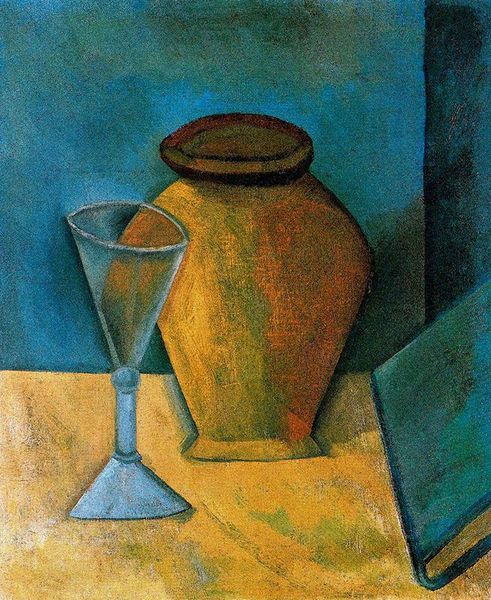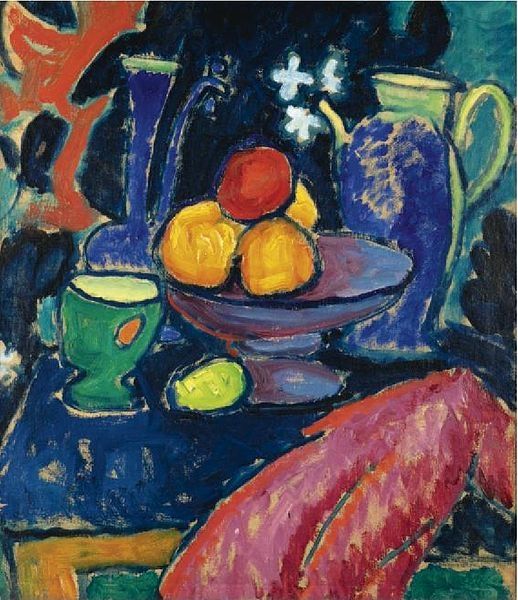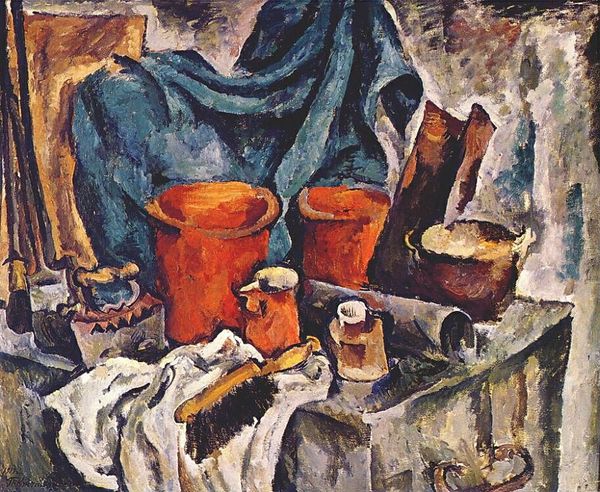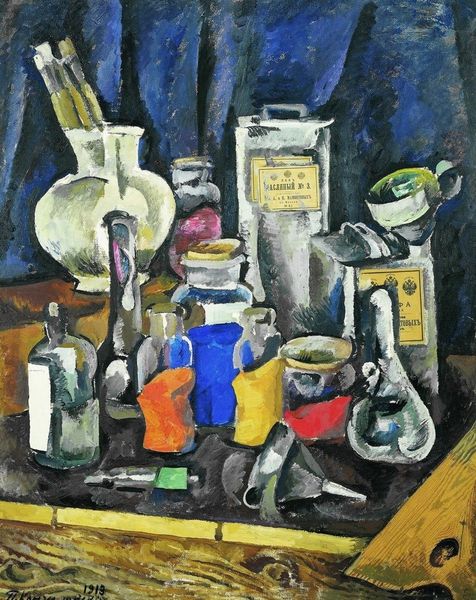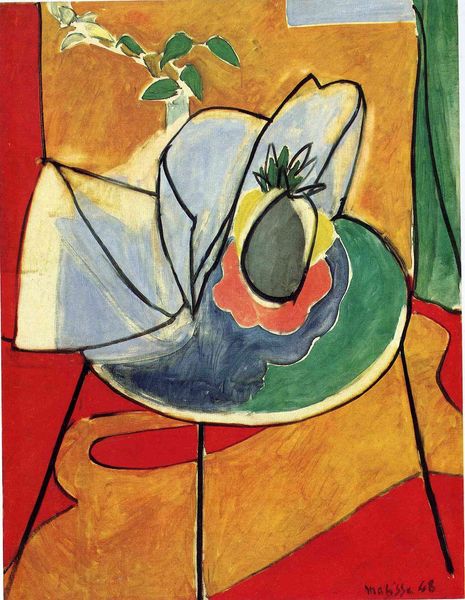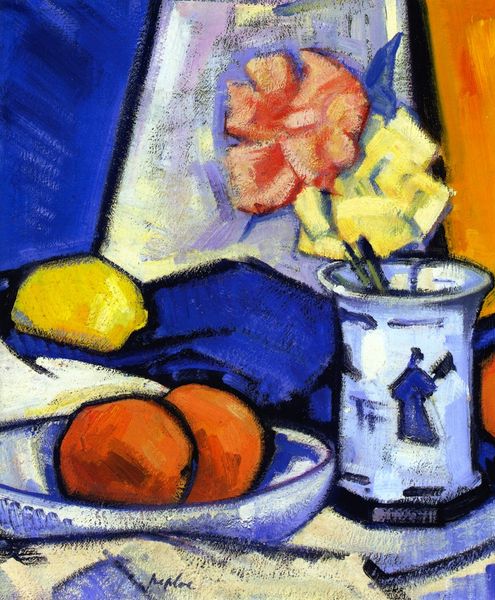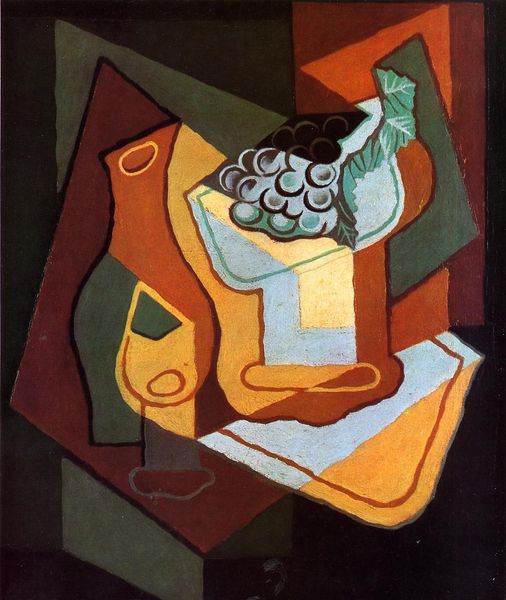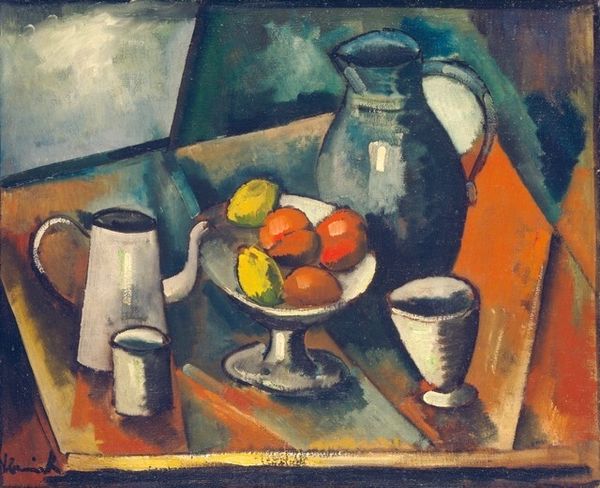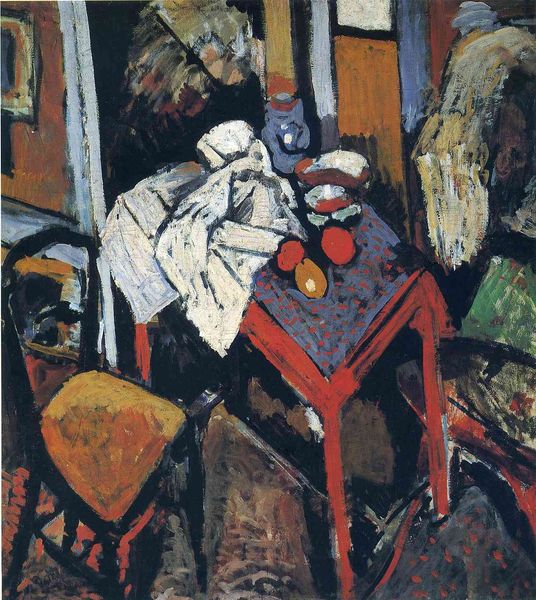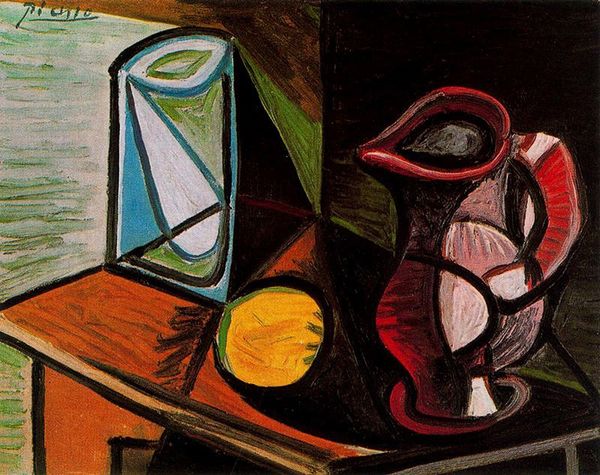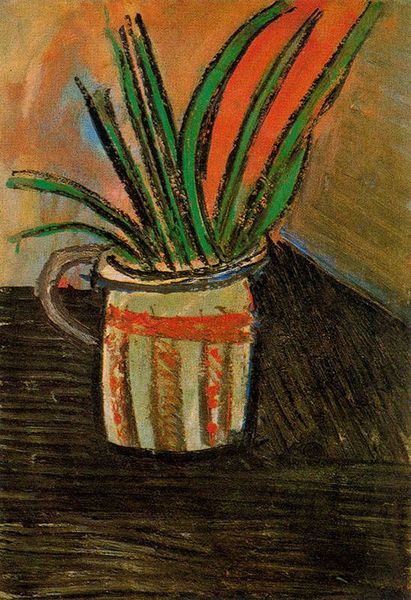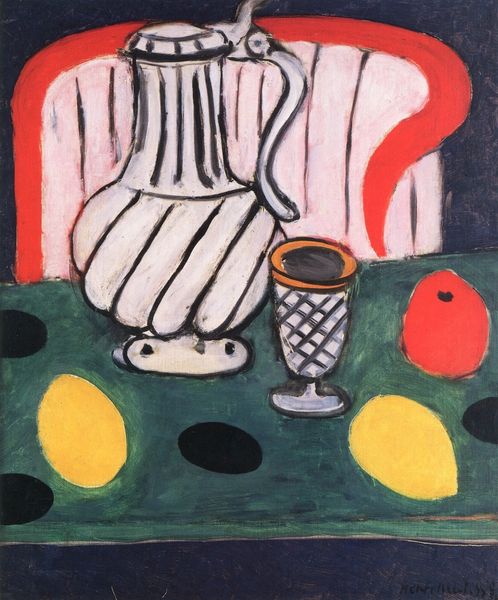
oil-paint
#
cubism
#
narrative-art
#
oil-paint
#
oil painting
#
geometric
#
modernism
Dimensions: 62 x 48 cm
Copyright: Public domain US
Curator: "Still Life with Lemons," painted by Pablo Picasso in 1907. You can see that he used oil paint, a typical choice at the time. What's your immediate take on it? Editor: It strikes me as surprisingly...grounded. The colours are earthy, and there's a tactile quality to the brushstrokes that contrasts with the radical nature of early cubism, a movement that questioned modes of representation and sought for multiple viewpoints within a single art work. Curator: Indeed. Though considered one of the precursors to cubism, the socio-political undercurrents of shifting perspectives in this particular piece are complex. The seemingly simple lemons… could we interpret them as a symbolic representation of bourgeoisie life, painted during a tumultuous period when social hierarchies were being challenged? Is this Picasso hinting at instability, peeling back the layers of bourgeois normalcy? Editor: That's certainly an interesting interpretation. Though still life has its own social context rooted in consumption and display of goods, it's a more neutral subject than, say, a history painting meant for public edification. Given the timeframe, with its rising tides of bohemianism, one wonders if Picasso, by engaging in still life, isn't deliberately snubbing his nose at institutionalized art. Curator: Possibly. I find myself thinking about who benefits from images like these and whose stories might remain absent. Where do we find the echoes of marginalized voices within such depictions of seemingly commonplace objects? Editor: A compelling question. One can read into art that which reflects the current moment. Zooming out and taking in Picasso's body of work reveals a tension. There is often commentary through satire or more pointed caricature and here he subverts conventional representation; but the subject seems ordinary, domesticated. This particular still life presents us not with abundance or excess but with the simple. The everyday, accessible to the working class. A quiet rebellion, perhaps? Curator: The art world tends to celebrate the 'shock of the new' and, I am in favour of seeking how and why artists challenge conventions but also consider the role of the mundane as potential spaces for subtle shifts in perspectives. Editor: An excellent point. Perhaps Picasso is speaking about change from the ground up, by making visible the supposedly invisible elements that define ordinary, day to day experience and giving to us all the potential for political reflection through domestic life.
Comments
No comments
Be the first to comment and join the conversation on the ultimate creative platform.
